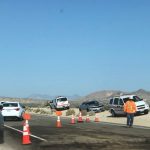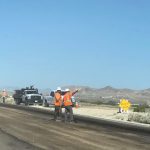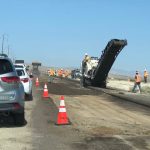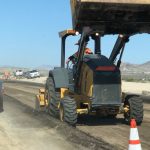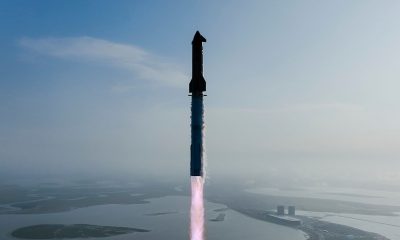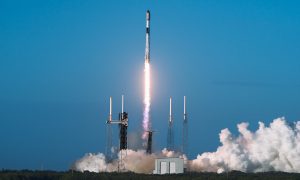Earth is dynamic, not just the landscape but also its internal workings. The magnetic poles flip, it bleeds lava, and the crust trembles; it’s a misconception that we are on solid ground. Earthquakes happen frequently. Most of the time we cannot feel them, but occasionally there’s one that really rocks the surface.
Soon after I took on the Grand Canyon in my solo hike, the Earth’s crust had stressed itself out and released enough energy to roll the ground for hundreds of miles. It was a glorious 7.1 magnitude quake, equivalent to the energy of 45 atomic bombs. For whatever reason, earthquakes don’t frighten me. Maybe it was the rocket launches I’ve experienced? Perhaps all the hurricanes? If you’re close enough to a rocket launch in Florida, you can feel the ground shake. It’s definitely a thrill!
One-hundred forty five miles (233 kilometers) away and 5 miles (8 kilometers) in depth, a fault had dislocated in an area called Searles Valley. Luckily, this was within driving distance and the area accessible to me. On a quest for knowledge and to feel the planet’s rhythm once again, I set off to the epicenter using an app of the location. I brought camping gear with me like last time, ready to explore the area and stay the night as close to the epicenter as possible while hoping for a night full of rumbling.
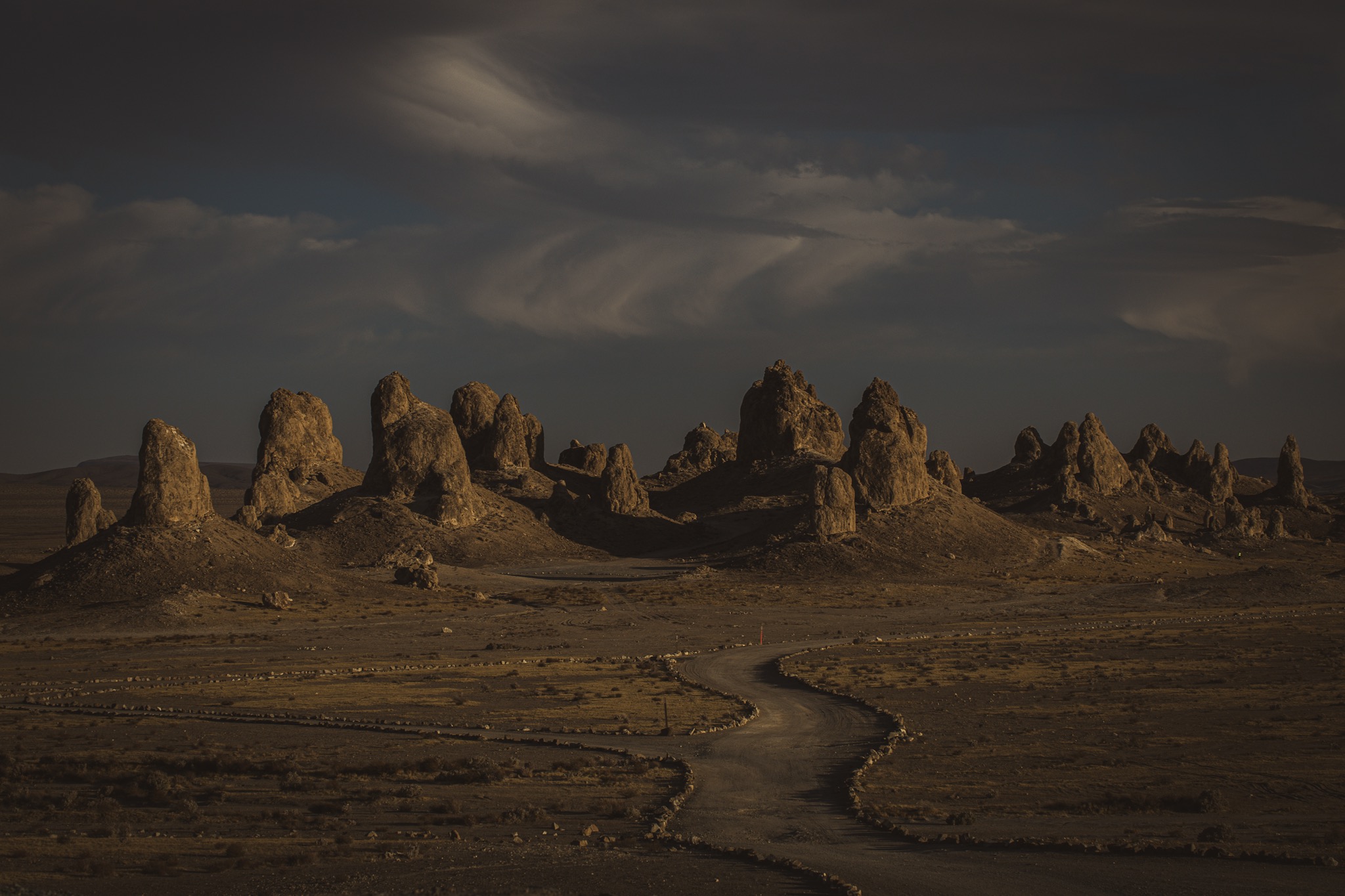
- Crews in Ridgecrest repair the roads after an earthquake. | Image: Tom Cross
- Crews in Ridgecrest repair the roads after an earthquake. | Image: Tom Cross
- Crews in Ridgecrest repair the roads after an earthquake. | Image: Tom Cross
- Crews in Ridgecrest repair the roads after an earthquake. | Image: Tom Cross
Destruction from the quake was visible on the drive to the epicenter. A small town called Ridgecrest took the brunt of the force because it’s established along the fault. Driving through the town, crews were cutting large sections of road where it had cracked and were completely repaving the area properly rather than just smoothing out the fracture; I was impressed to see them put that much work into a repair. On either side of the road, the ground was noticeably lifted from the rolling shockwave. Homes in the location had freshly collapsed walls, and a gas station had sunken into the ground a few inches, yet it was still pumping gas and collecting payment even though it had no power or water. The store clerk sat outside in a chair turning customers away. Grocery stores were still open but were missing ceiling tiles, and certain aisles were closed for cleaning.
While eating lunch in a store, I felt a bump at the table and the visible water pipes in the ceiling were swaying. Something had slipped off a shelf and shattered glass on the floor. This was one of the many aftershocks that I was pursuing!
A dry lake was as close as I could get to the epicenter. Unusual rock formations made of calcium carbonate called tufa that formed 10,000 years prior when water filled the basin were scattered along the landscape. Now I was walking through them, investigating changes caused by the earthquake and hoping to feel aftershocks in this area. I discovered a crack in the dense tufa and put my fingers inside. Abandoned railroad tracks offered an opportunity to feel the vibration along a great distance, so I lay down on the steel quietly for awhile.
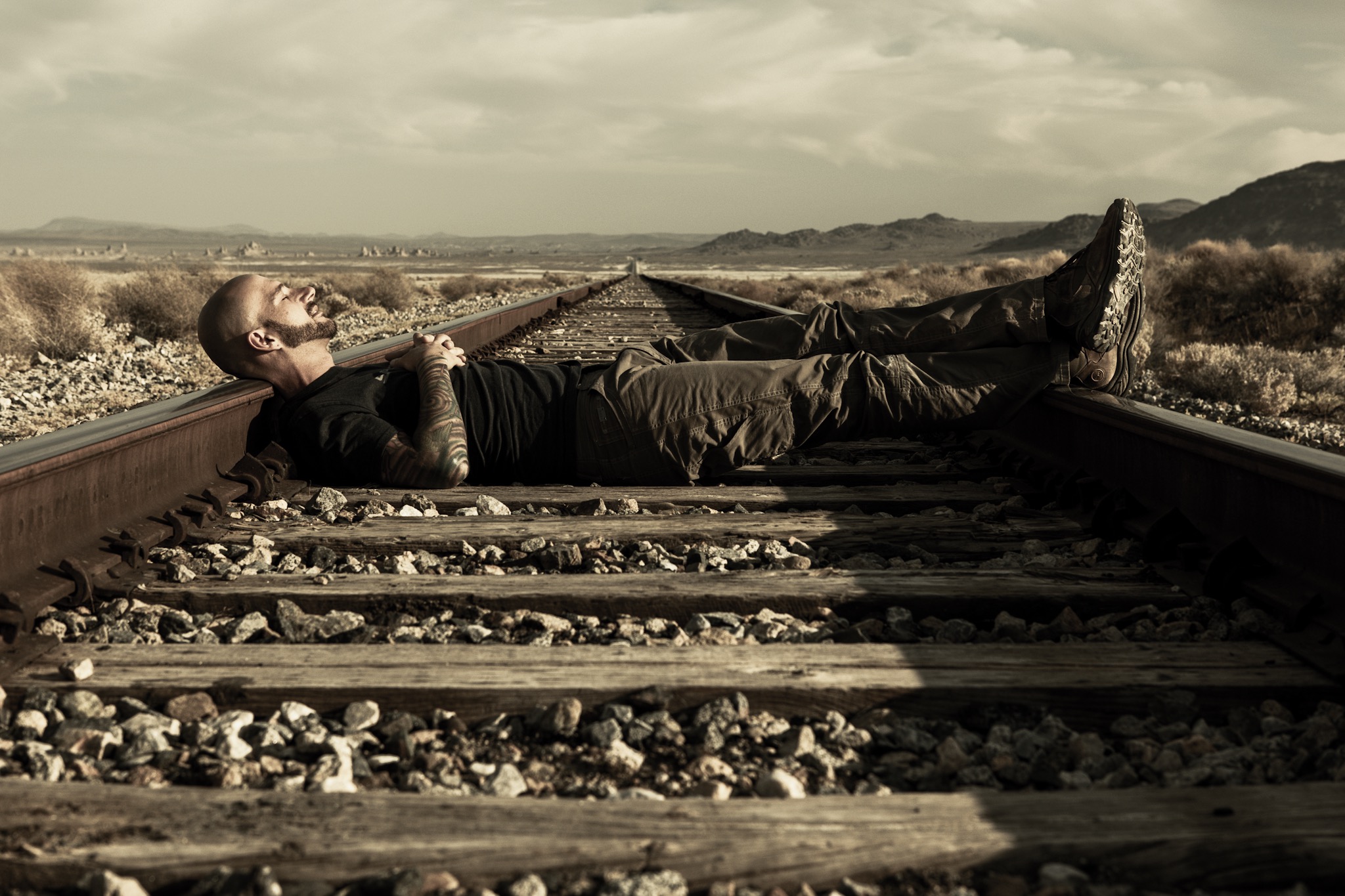
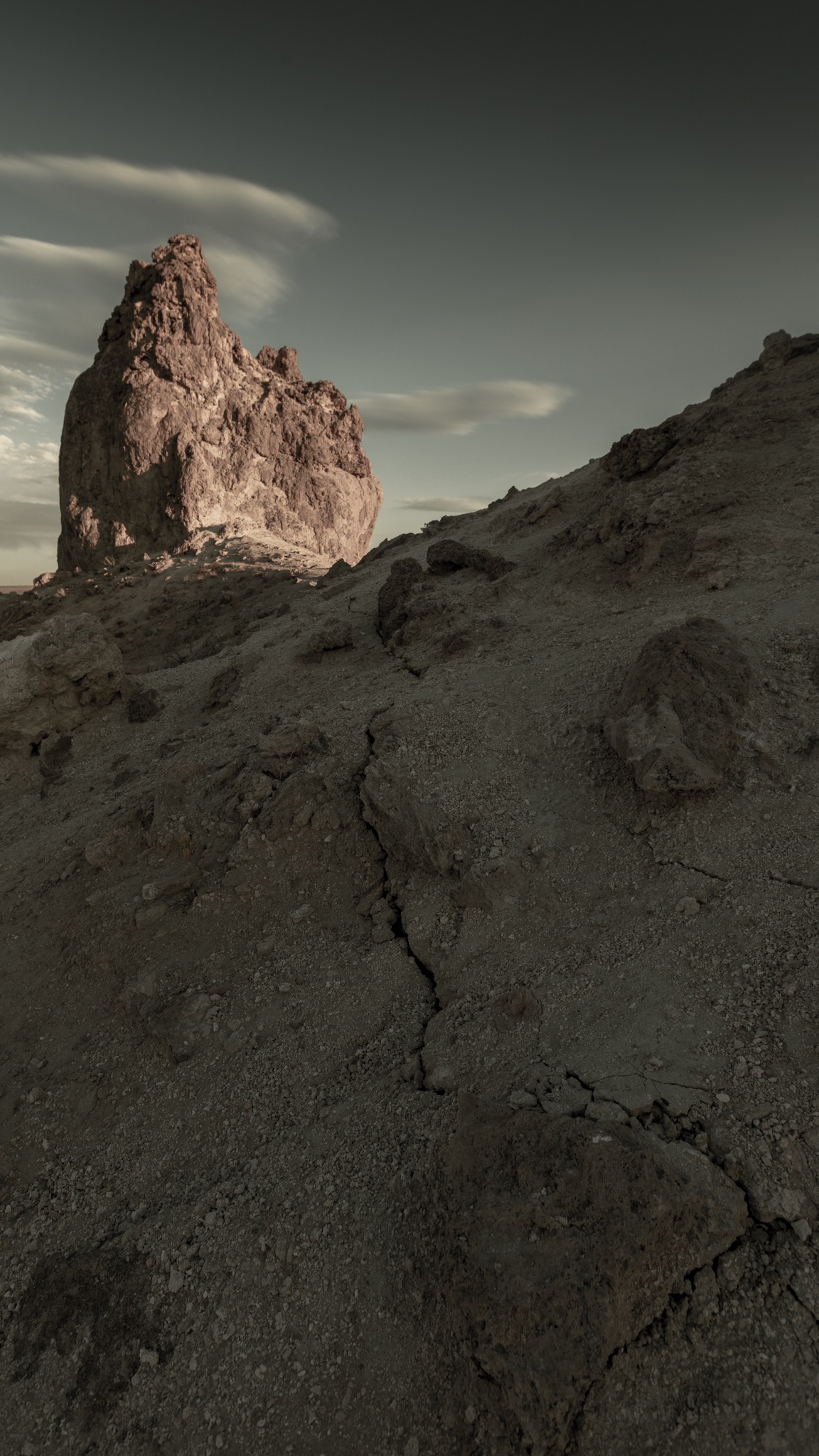
As night approached, I set up a camera to shoot time-lapse of the Milky Way, parked my vehicle nearby, and put together a sleeping arrangement on the roof. Throughout the night I watched meteors burn up in the atmosphere with the awesome backdrop of our galaxy that’s thousands of light years in visible depth. I thought of the reality that I’m one of many creatures created by the cosmos, floating in a sea of energy swirling around on a rock enveloped in gas we breathe. Life is extraordinary. Where else is it located?
An app on my phone pinged, signaling an earthquake had just occurred, and my spaced out thoughts had come back to the ground. I paid attention to the motion of my vehicle; certainly the rocking could be better felt due to the suspension. For the remainder of the night I allowed my body to sense the silent rumblings of the earth while I’d guess the magnitude. Two minutes after each quake, my phone would ping and display the stats; I’d study them to increase my understanding of the energy I experienced.
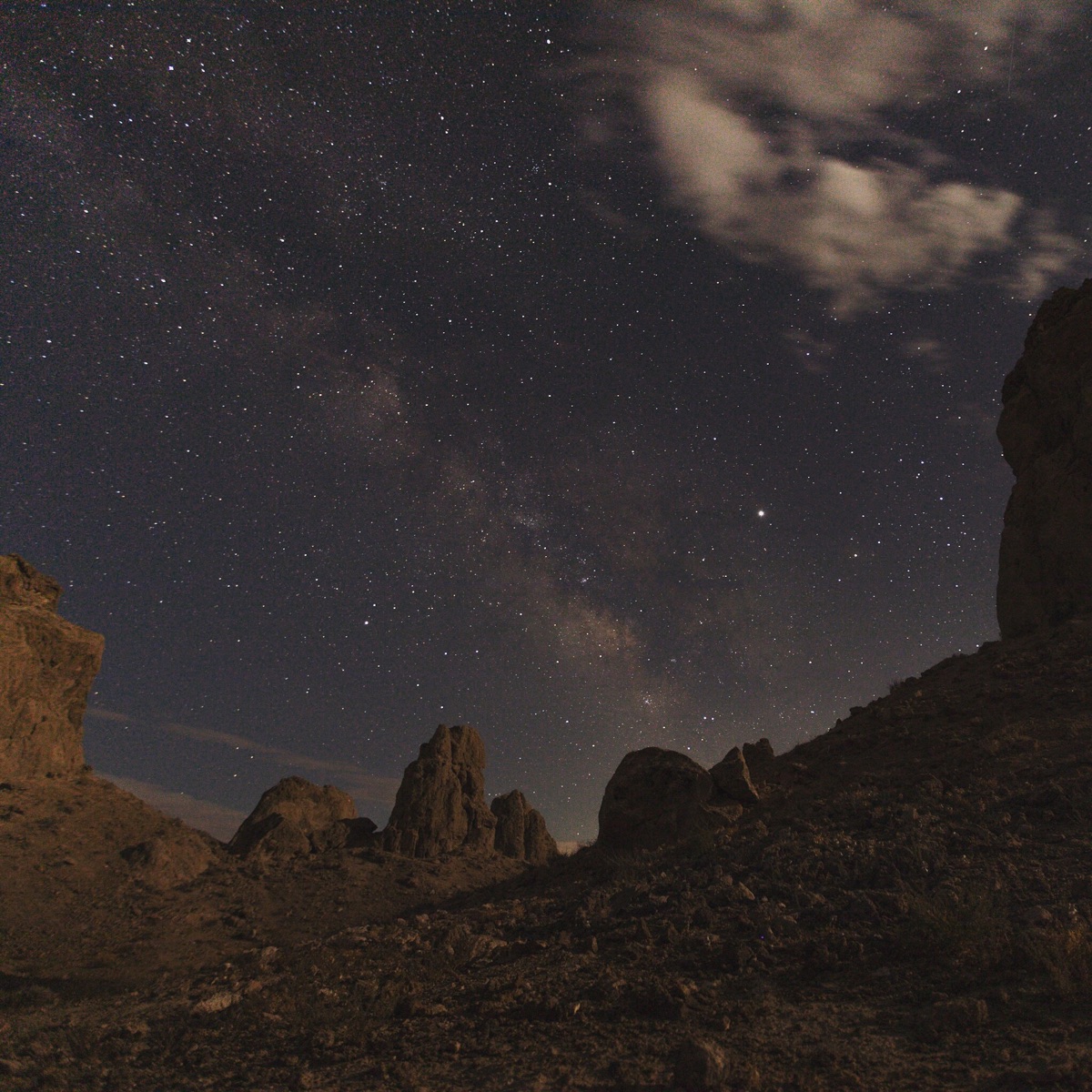
I enjoyed the bumping and rocking while watching the sky rotate above. For the first time, I immersed myself into a dynamic experience of our planet’s movements on the ground and in space. Some of the most incredible locations have been formed by the destructive forces of earthquakes.
In next week’s blog, I take a trip into the nearby snow-capped mountains and witness the beauty created by natural disaster. Stay tuned!
Elon Musk
X account with 184 followers inadvertently saves US space program amid Musk-Trump row
Needless to say, the X user has far more than 184 followers today after his level-headed feat.
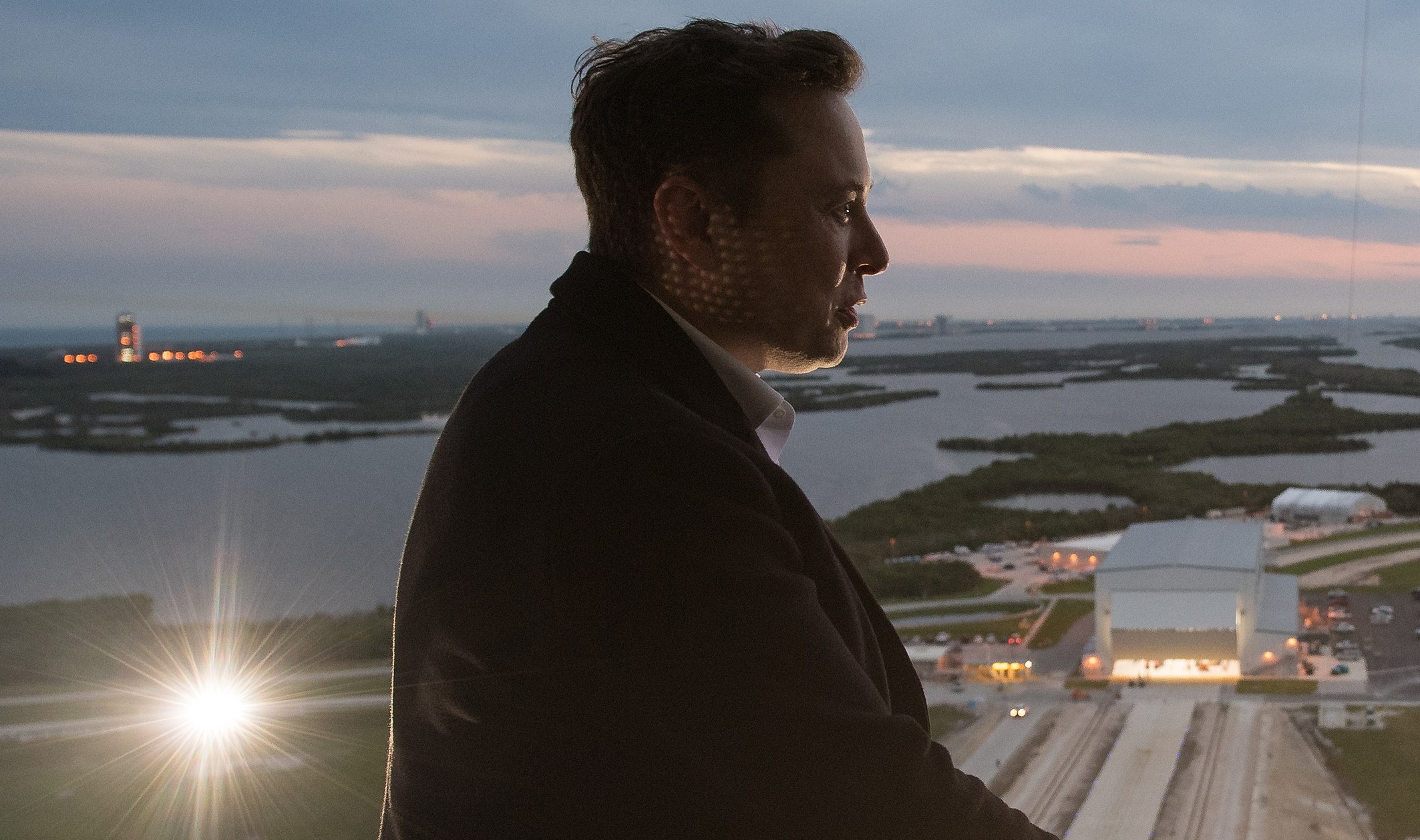
An X user with 184 followers has become the unlikely hero of the United States’ space program by effectively de-escalating a row between SpaceX CEO Elon Musk and President Donald Trump on social media.
Needless to say, the X user has far more than 184 followers today after his level-headed feat.
A Near Fall
During Elon Musk and Donald Trump’s fallout last week, the U.S. President stated in a post on Truth Social that a good way for the United States government to save money would be to terminate subsidies and contracts from the CEO’s companies. Musk responded to Trump’s post by stating that SpaceX will start decommissioning its Dragon spacecraft immediately.
Musk’s comment was received with shock among the space community, partly because the U.S. space program is currently reliant on SpaceX to send supplies and astronauts to the International Space Station (ISS). Without Dragon, the United States will likely have to utilize Russia’s Soyuz for the same services—at a significantly higher price.
X User to the Rescue
It was evident among X users that Musk’s comments about Dragon being decommissioned were posted while emotions were high. It was then no surprise that an X account with 184 followers, @Fab25june, commented on Musk’s post, urging the CEO to rethink his decision. “This is a shame this back and forth. You are both better than this. Cool off and take a step back for a couple days,” the X user wrote in a reply.
Much to the social media platform’s surprise, Musk responded to the user. Even more surprising, the CEO stated that SpaceX would not be decommissioning Dragon after all. “Good advice. Ok, we won’t decommission Dragon,” Musk wrote in a post on X.
Not Planned, But Welcomed
The X user’s comment and Musk’s response were received extremely well by social media users, many of whom noted that @Fab25june’s X comment effectively saved the U.S. space program. In a follow-up comment, the X user, who has over 9,100 followers as of writing, stated that he did not really plan on being a mediator between Musk and Trump.
“Elon Musk replied to me. Somehow, I became the accidental peace broker between two billionaires. I didn’t plan this. I was just being me. Two great minds can do wonders. Sometimes, all it takes is a breather. Grateful for every like, DM, and new follow. Life’s weird. The internet’s weirder. Let’s ride. (Manifesting peace… and maybe a Model Y.)” the X user wrote.
Lifestyle
Tesla Cybertruck takes a bump from epic failing Dodge Charger
The Cybertruck seemed unharmed by the charging Charger.
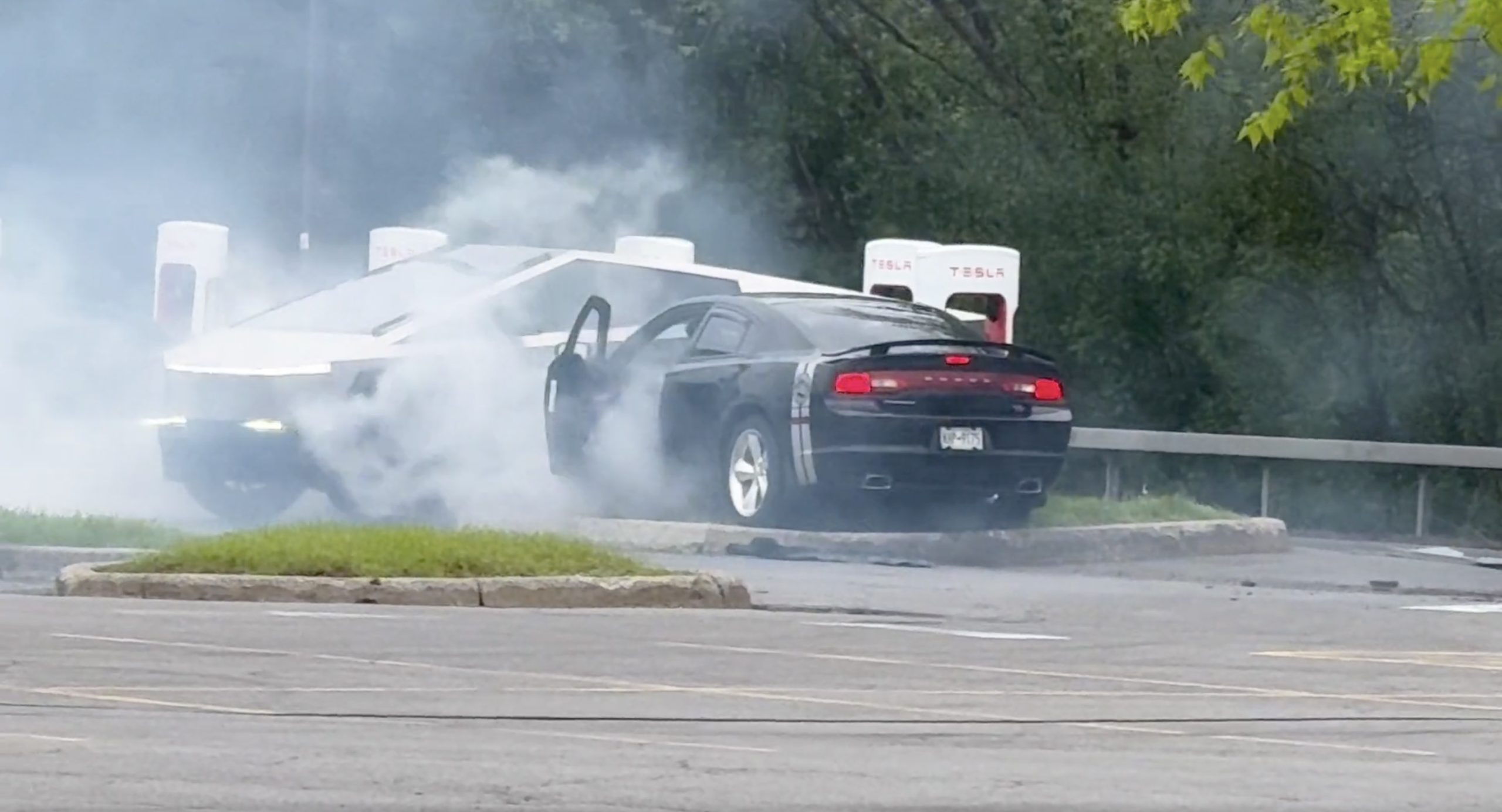
There comes a time in a driver’s life when one is faced with one’s limitations. For the driver of a Dodge Charger, this time came when he lost control and crashed into a Tesla Cybertruck–an absolute epic fail.
A video of the rather unfortunate incident was shared on the r/TeslaLounge subreddit.
Charging Charger Fails
As could be seen in the video, which was posted on the subreddit by Model Y owner u/Hammer_of_something, a group of teens in a Dodge Charger decided to do some burnouts at a Tesla Supercharger. Unfortunately, the driver of the Charger failed in his burnout or donut attempt, resulting in the mopar sedan going over a curb and bumping a charging Cybertruck.
Ironically, the Dodge Charger seemed to have been parked at a Supercharger stall before its driver decided to perform the failed stunt. This suggests that the vehicle was likely ICE-ing a charging stall before it had its epic fail moment. Amusingly enough, the subreddit member noted that the Cybertruck did not seem like it took any damage at all despite its bump. The Charger, however, seemed like it ran into some trouble after crashing into the truck.
Alleged Aftermath
As per the the r/TeslaLounge subreddit member, the Cybertruck owner came rushing out to his vehicle after the Dodge Charger crashed into it. The Model Y owner then sent over the full video of the incident, which clearly showed the Charger attempting a burnout, failing, and bumping into the Cybertruck. The Cybertruck owner likely appreciated the video, in part because it showed the driver of the Dodge Charger absolutely freaking out after the incident.
The Cybertruck is not an impregnable vehicle, but it can take bumps pretty well thanks to its thick stainless steel body. Based on this video, it appears that the Cybertruck can even take bumps from a charging Charger, all while chilling and charging at a Supercharger. As for the teens in the Dodge, they likely had to provide a long explanation to authorities after the incident, since the cops were called to the location.
Lifestyle
Anti-Elon Musk group crushes Tesla Model 3 with Sherman tank–with unexpected results
Ironically enough, the group’s video ended up highlighting something very positive for Tesla.

Anti-Elon Musk protesters and critics tend to show their disdain for the CEO in various ways, but a recent video from political action group Led By Donkeys definitely takes the cake when it comes to creativity.
Ironially enough, the group’s video also ended up highlighting something very positive for Tesla.
Tank vs. Tesla
In its video, Led By Donkeys featured Ken Turner, a 98-year-old veteran who served in the British army during World War II. The veteran stated that Elon Musk, the richest man in the world, is “using his immense power to support the far-right in Europe, and his money comes from Tesla cars.”
He also noted that he had a message for the Tesla CEO: “We’ve crushed fascism before and we’ll crush it again.” To emphasize his point, the veteran proceeded to drive a Sherman tank over a blue Tesla Model 3 sedan, which, of course, had a plate that read “Fascism.”
The heavy tank crushed the Model 3’s glass roof and windows, much to the delight of Led By Donkeys’ commenters on its official YouTube channel. But at the end of it all, the aftermath of the anti-Elon Musk demonstration ended up showcasing something positive for the electric vehicle maker.
Tesla Model 3 Tanks the Tank?
As could be seen from the wreckage of the Tesla Model 3 after its Sherman encounter, only the glass roof and windows of the all-electric sedan were crushed. Looking at the wreckage of the Model 3, it seemed like its doors could still be opened, and everything on its lower section looked intact.
Considering that a standard M4 Sherman weighs about 66,800 to 84,000 pounds, the Model 3 actually weathered the tank’s assault really well. Granted, the vehicle’s suspension height before the political action group’s demonstration suggests that the Model 3’s high voltage battery had been removed beforehand. But even if it hadn’t been taken off, it seemed like the vehicle’s battery would have survived the heavy ordeal without much incident.
This was highlighted in comments from users on social media platform X, many of whom noted that a person in the Model 3 could very well have survived the ordeal with the Sherman. And that, ultimately, just speaks to the safety of Tesla’s vehicles. There is a reason why Teslas consistently rank among the safest cars on the road, after all.
-

 News5 days ago
News5 days agoTesla Robotaxi’s biggest challenge seems to be this one thing
-

 News2 weeks ago
News2 weeks agoTesla confirms massive hardware change for autonomy improvement
-

 Elon Musk2 weeks ago
Elon Musk2 weeks agoElon Musk slams Bloomberg’s shocking xAI cash burn claims
-

 News2 weeks ago
News2 weeks agoTesla features used to flunk 16-year-old’s driver license test
-

 News2 weeks ago
News2 weeks agoTesla China roars back with highest vehicle registrations this Q2 so far
-

 News2 weeks ago
News2 weeks agoTexas lawmakers urge Tesla to delay Austin robotaxi launch to September
-

 News2 weeks ago
News2 weeks agoTesla dominates Cars.com’s Made in America Index with clean sweep
-

 News2 weeks ago
News2 weeks agoTesla’s Grok integration will be more realistic with this cool feature

